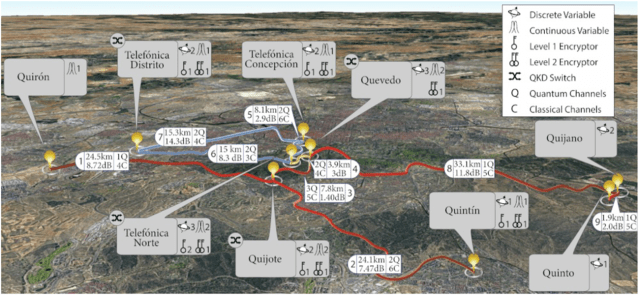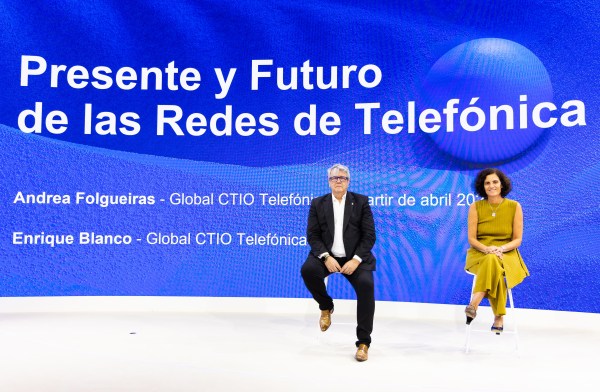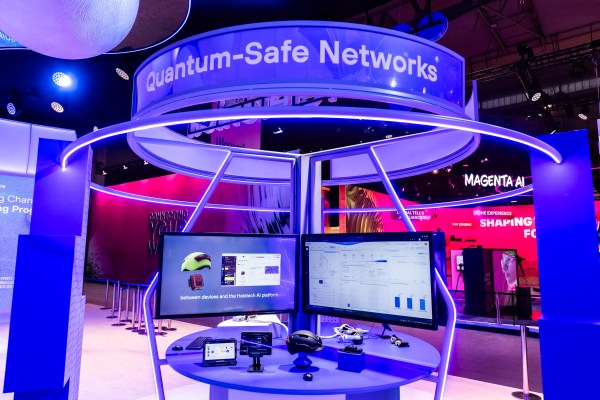One of the most important challenges posed by the creation of a new technology is the possibility of evaluating its operation in realistic environments. This has been Telefónica’s objective when participating with its own infrastructure in the MadQCI quantum communications network. This network has positioned itself as one of the national infrastructures available to evaluate the future EuroQCI network, the pan-European network that will make QKD (Quantum Key Distribution) technology available to different public entities, such as administrations and governments. MadQCI is operational thanks to the collaboration of universities and research centers, such as the Polytechnic University of Madrid and the IMDEA Software Institute of the Community of Madrid, and the leading manufacturers of network equipment and QKD systems (ID Quantique, Toshiba, ADVA, Rohde & Schwarz and Quside, among others).
QKD is a technology that makes it possible to generate cryptographic keys reliably and synchronously between two distant points, resolving the problem of generating and distributing keys for applications. Its principles based on quantum mechanics guarantee the inviolability of the keys, which makes its use in combination with hardware and software encryption systems an optimal solution.
The result of this collaborative work has been recognized by Nature, the leading scientific journal, with the publication in September of an article that includes the details of the aforementioned quantum network integrated into an optical telecommunications network in a production environment, and in which the four members of Telefónica’s gCTIO team we are signing this post have participated.

This work has allowed the monitoring and analysis of this network over several years on a total of 9 locations, including the 3 Telefónica exchanges, and on 26 QKD systems for different uses and applications.
The article highlights the most relevant aspects of the project and describes its architecture, including the quantum planes or the optical connection. It also shares details of the network and application control based on the Software Defined Networking (SDN) principles that characterize Telefónica’s transport networks, following the standards established by the ETSI standardisation body and with which Telefónica actively collaborates. It also lists some use cases and the type of measures that have been generated. Telefónica has played a key role in the definition and adoption of SDN by manufacturers, as well as in the operational requirements. Moreover, as crucial elements for the future of this technology, aspects such as its use in the operator’s exchanges without special needs and the coexistence in the optical mesh of service traffic together with the QKD service are also emphasized.
Beyond the case study reported in Nature, Telefónica’s work on quantum communications is ongoing. We continue to analyze new quantum technologies, expand network capacity, improve optical and quantum integrations, and identify potential applications for future customers. Proof of this is the recent allocation to Telefónica of a new link to connect a Telefónica node with the rectorate building of the Universidad Politécnica de Madrid to be able to carry out additional experiments. In short, the research work continues, thanks also to the support of European research funds through the ‘Quantum Security Networks Partnership’ (QSNP) and EuroQCI-Spain projects.










